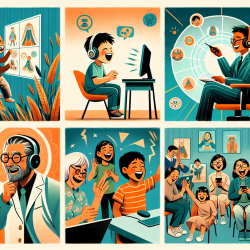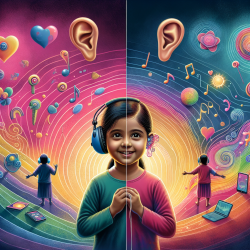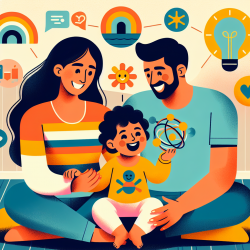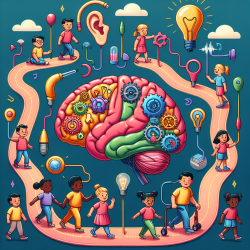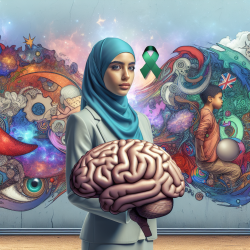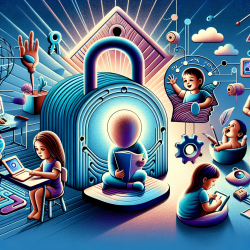As school counselors, we often find ourselves navigating through a maze of responsibilities and challenges, all aimed at supporting our students' well-being and academic success. Among these responsibilities, ensuring that children receive the necessary therapeutic support, especially those with Individualized Education Programs (IEPs), can sometimes feel like a daunting task. With the evolution of technology and the increasing availability of online therapy services, such as those provided by TinyEYE, we have new avenues to explore in supporting our students. This guide aims to shed light on virtual therapy, offering insights and inspiration for school counselors looking to enhance their toolkit in our ever-changing educational landscape.
Feeling lost in the vast sea of online therapy options is understandable. The digital age brings with it a plethora of services, each promising to be the solution to our needs. However, the question remains: How can we, as school counselors, effectively navigate these waters to ensure our students receive the best possible support? The answer lies in understanding the benefits, addressing concerns, and knowing how to integrate virtual therapy into our schools effectively.
The Benefits of Virtual Therapy for Children
Virtual therapy offers a range of benefits for children, particularly those with IEPs. One of the most significant advantages is accessibility. Children can receive therapy in the comfort of their own homes or a designated space within the school, reducing the stress associated with traveling to appointments and adjusting to new environments. This accessibility is crucial for children who may face physical or logistical barriers to traditional therapy.
Another benefit is the customization and flexibility that virtual therapy provides. Online therapy services like TinyEYE tailor their programs to meet the individual needs of each child, ensuring that the therapeutic process is as effective as possible. This personalized approach, coupled with the ability to schedule sessions at times that work best for the child and their family, makes virtual therapy an invaluable tool in our quest to support our students.
Furthermore, virtual therapy can lead to increased engagement from children. The use of interactive tools and games can make therapy sessions more enjoyable and engaging, leading to better outcomes. For children who are digital natives, this mode of therapy feels natural and can often encourage participation and openness.
Addressing Concerns and Challenges
Despite its benefits, transitioning to virtual therapy can raise concerns among parents, educators, and even the students themselves. Questions about the effectiveness of online therapy compared to in-person sessions, privacy and security, and the potential for technical issues are common. As school counselors, it's our role to address these concerns by providing clear, evidence-based information.
Research has shown that virtual therapy can be just as effective as traditional methods for many children, including those with specific therapeutic needs outlined in their IEPs. Online therapy services like TinyEYE prioritize privacy and security, ensuring that all sessions are conducted in a safe and confidential manner. Additionally, by working closely with these providers, we can help families and schools prepare for and mitigate potential technical issues, ensuring a smooth and productive therapy experience.
Integrating Virtual Therapy into Schools
The integration of virtual therapy into our schools requires a collaborative effort. It begins with educating ourselves, our colleagues, and the families we serve about the benefits and logistics of online therapy. Open communication is key to addressing any concerns and setting realistic expectations for what virtual therapy can achieve.
For students with IEPs, virtual therapy services like TinyEYE can play a critical role in meeting their specific needs. By working closely with these online therapy providers, we can ensure that the therapeutic goals outlined in each child's IEP are being met. This collaboration also allows for a more holistic approach to each child's education and well-being, ensuring that all aspects of their development are supported.
Another important step in integrating virtual therapy into our schools is facilitating the necessary technological access. This may involve working with school administration to provide devices or internet access to children who need it or creating dedicated spaces within the school where students can participate in their therapy sessions without distractions.
Lastly, ongoing monitoring and evaluation are crucial. By regularly checking in with students, families, and therapy providers, we can assess the effectiveness of the virtual therapy being provided and make adjustments as needed. This feedback loop ensures that the therapy remains relevant and beneficial to each child's unique needs.
Conclusion
As school counselors, our mission is to support the academic and personal growth of every student. In an increasingly digital world, virtual therapy presents a unique opportunity to fulfill this mission in innovative and effective ways. By embracing online therapy services, such as those offered by TinyEYE, we can provide our students, especially those with IEPs, with the support they need to thrive both in and out of the classroom.
Feeling lost is a natural part of confronting new challenges, but it's also the first step towards finding a path forward. By educating ourselves about virtual therapy, addressing concerns head-on, and working collaboratively to integrate these services into our schools, we can turn uncertainty into opportunity. Let's embark on this journey together, inspired by the potential to make a meaningful difference in the lives of the children we serve.



